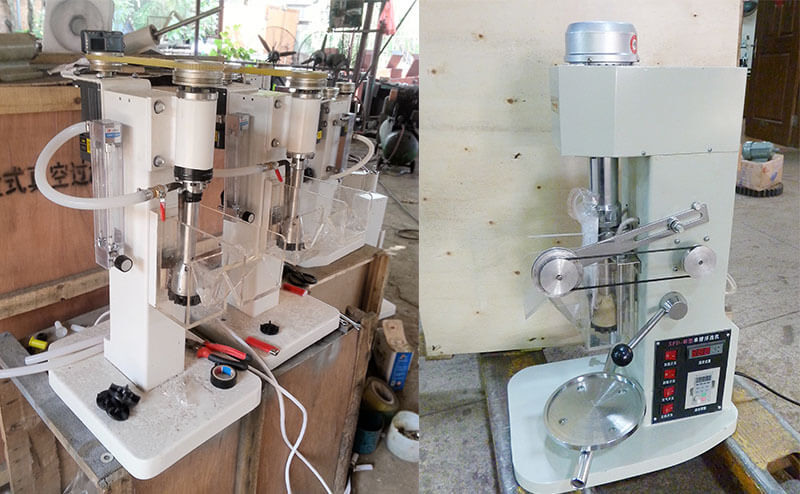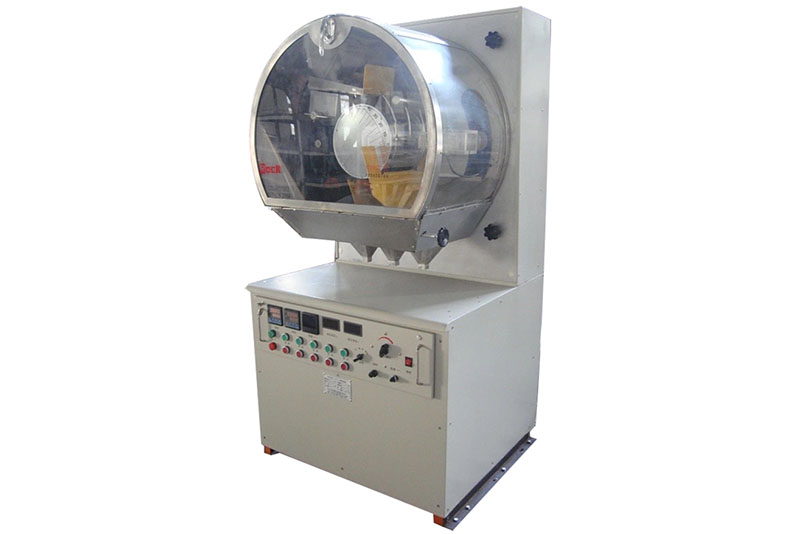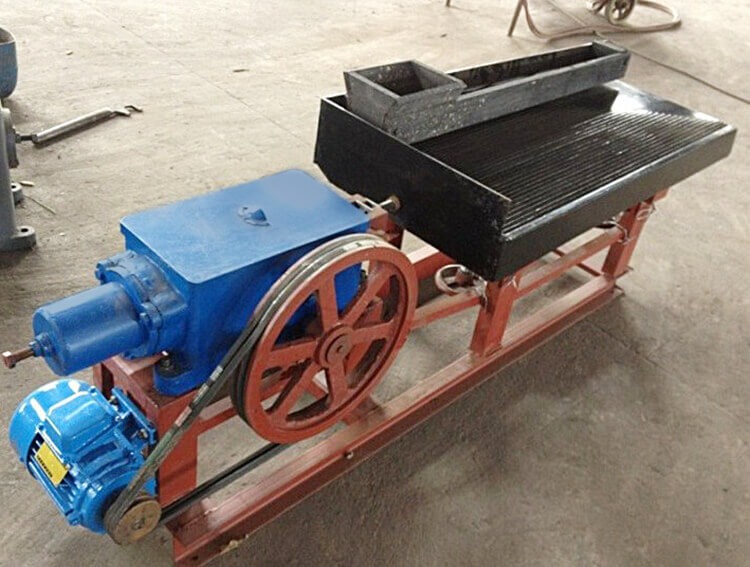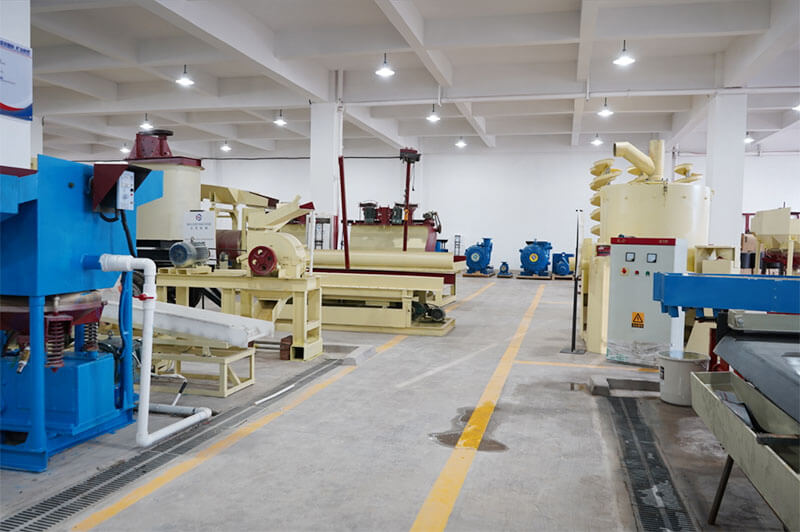The ball mill is essential equipment for grinding materials after the crushing process, and it is currently the ordinary grinding machine in mineral processing plants. According to the different ore discharge methods, ball mills include grid-type ball mills and overflow-type ball mills. So what is the difference between these two types?
Grid And Overflow-Type Ball Mill
According to the ore discharge method, ball mills include two categories: grid-type and overflow-type. Besides, what is the difference between these two ball mills?
1. Grid-type ball mill
The discharge side of the grid-type ball mill is equipped with grid lining plates. There are many 7mm-20mm discharge holes on the grid board. The material ground by the ball mill will pass through the grid lining plate, and on the side near the discharge end of the grid plate, it installs an ore lifting device. This is a radial strip, that divides the grid plate and end cover into several fan-shaped chambers leading to the hollow shaft neck. When the ball mill rotates, the radial ribs lift the slurry discharged from the small holes on the grid plate to the discharge hollow shaft neck, discharging it from the ball mill through the hollow shaft neck.
2. Overflow-type ball mill
There is no grid lining plate on the discharge side of the overflow-type ball mill. Instead, on the inner surface of the hollow shaft neck liner at the discharge end, there are spiral blades with opposite rotation directions to the mill to prevent balls or coarse ore blocks from being discharged together with the slurry. The discharge of the overflow-type ball mill relies on the natural flow of the slurry passing through the lower edge of the hollow shaft neck liner, which is why the overflow-type ball mill is named.

Similarities between grid-type and overflow-type ball mill
The structure is the same
The structure of the two types of ball mills is the same, mainly composed of the cylinder, feeding, discharge, bearing, transmission part, and lubrication system.
Similar workflow
When working, the vibrating feeder transports the material to the ball mill, and the barrel rotates around the horizontal axis at the specified speed. At the same time, the ore undergoes free-flowing or throwing motion through centrifugal force and friction of the grinding material, achieving impact and grinding effect. The final product will be discharged from the discharge department.
Differences between grid-type and overflow-type ball mill
Structure of the mining department
- The basic structure and grinding process are the same, but the structure of the ore discharge department is different.
- The discharge side of the grid-type ball mill is equipped with a grid lining plate (which is why it is named the grid-type ball mill), and there is an additional grid plate at the discharge end, with many discharge holes on the grid plate. The ground slurry is lifted to a level higher than the discharge port through a grid lining plate and a fan-shaped chamber leading to the discharge port, allowing the slurry to be discharged from the ball mill.
There is no grid lining plate on the discharge side of the overflow-type ball mill. Instead, it installs the spiral blades on the inner surface of the hollow shaft neck liner at the discharge end, which has a spiral direction opposite to the rotation direction of the mill. The purpose is to prevent water balls or coarse ore blocks from being discharged together with the slurry. The discharge of the overflow-type ball mill is caused by the slurry passing through the lower edge of the hollow shaft neck liner and flowing out naturally (this is also why it is named the overflow-type ball mill).
2. Discharge particle size (application range)
- The upper limit of particle size for the grinding products of grid-type ball mills is generally 0.2-0.3mm, so it is commonly used in the first grinding stage and often forms a closed loop with a spiral classifier.This machine usually work with lab crushers and grinders, etc.
- The particle size of ore grinding products from overflow ball mills is generally less than 0.2mm. It is suitable for concentrate regrinding operations and can obtain finer qualified products.
-
Discharge method
The grid-type ball mill discharges materials through a sieve plate, while the overflow-type ball mill automatically overflows materials. When the material piles higher than the discharge port, it will automatically discharge.
-
Production capacity
The working characteristics of grid-type ball mills are forced ore discharge and high production capacity. This ball mill is usually for the first stage of grinding operation, which can achieve higher processing capacity, but the product particle size is coarser than overflow-type ball mills.
-
Grinding effect
The steel balls inside the grid-type ball mill are in different sizes. When the steel balls are lifted to a certain height and fall back, the relatively low slurry surface has a larger drop height. Therefore, the steel balls have a stronger impact on the material, a better crushing effect on the ore, and a better grinding effect.
-
Overcrushing phenomenon
The unique grid plate and lifting bucket inside the fan-shaped chamber of the grid-type ball mill achieve low-level forced ore discharge. The finely ground ore particles stay in the ball mill for a short time and are discharged promptly, reducing the phenomenon of over-crushing of crushed stones.
Overflow-type ball mills belong to non-forced high-level ore discharge, with slow discharge speed and long retention time in the machine, resulting in the over-grinding phenomenon.
-
Maintenance difficulty
Compared to the grid-type ball mill, the overflow-type ball mill has a simple structure and is easy to maintain, while the discharge structure of the grid-type ball mill makes it easy to block the grid plate during operation, making maintenance complex.
How to choose between these two types of ball mills?
In summary, we can draw the following conclusion:
1. Grid-type ball mill
- Advantages: Fast ore discharge speed will reduce the ove-crushing of stones and increase the unit volume output, which is higher than overflow ball mills.
- Disadvantages: It has a complex structure, easy blockage of grid plates during ore discharge, and complex maintenance, resulting in a relatively low operating rate.
2. Overflow ball mill
- Advantages: It has a simple structure with easy maintenance. Due to the reverse thread cast on the discharge pipe, large pieces of ore and steel balls are not easily discharged from the machine.
- Disadvantage: The production capacity per unit volume is relatively low, and it is prone to over-crushing.
Both types of ball mills have their characteristics in terms of usage and performance. Users need to clarify their production requirements, whether they want coarse or fine grinding, and output requirements for choosing the appropriate type of ball mill.
JXSC lab mineral processing equipment manufacturer has more than 38 years of experience in mining processing. We provide various lab mining equipment including gravity-separating equipment for processing minerals such as gold, tin, tungsten, lead, zinc, tantalum, niobium, iron, manganese, silver, titanium-iron, etc. Lab machines include laboratory jaw crusher, hammer crusher, roller crusher, grinding equipment, lab gravity separator, screening, washing equipment, etc. Welcome to consult!




